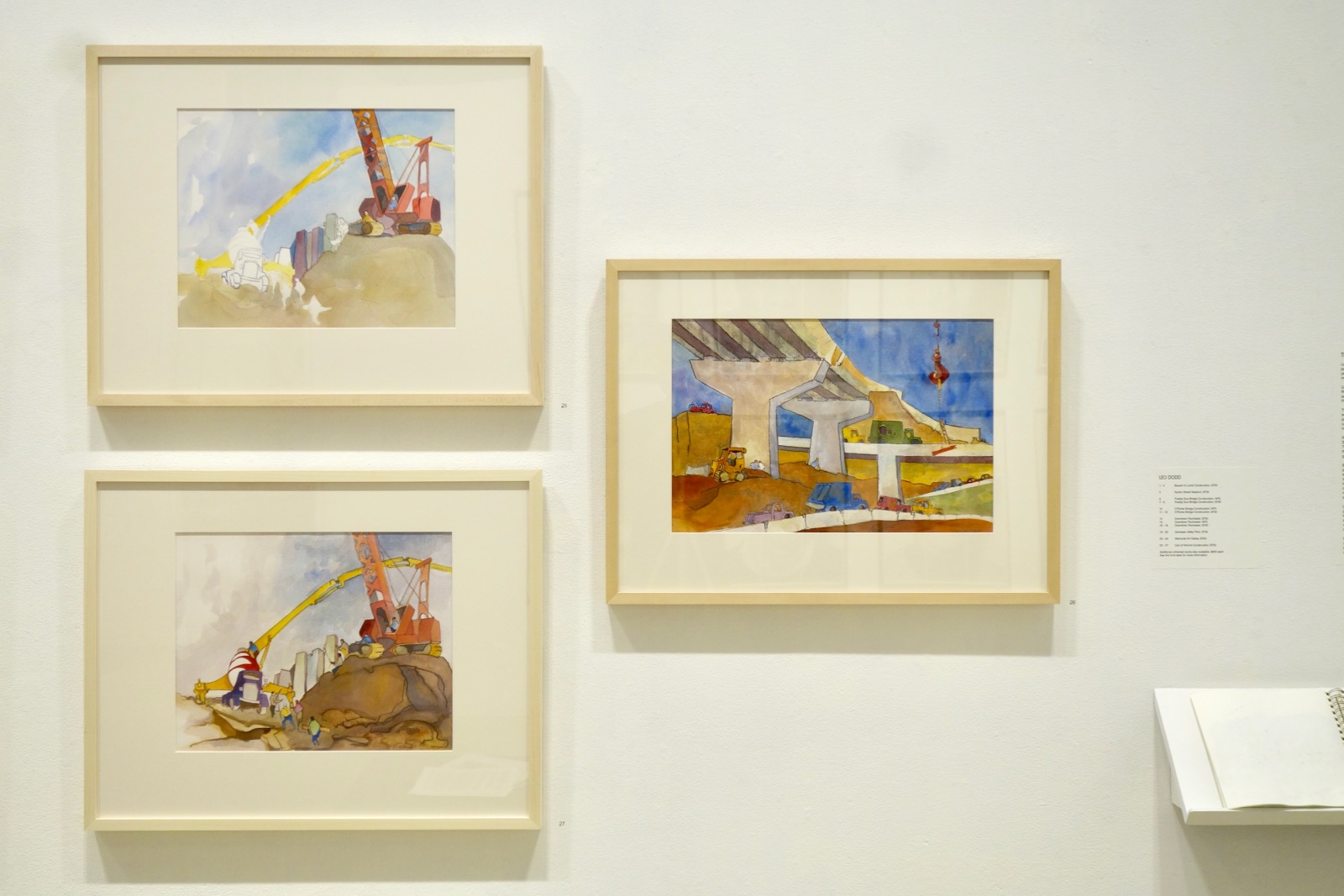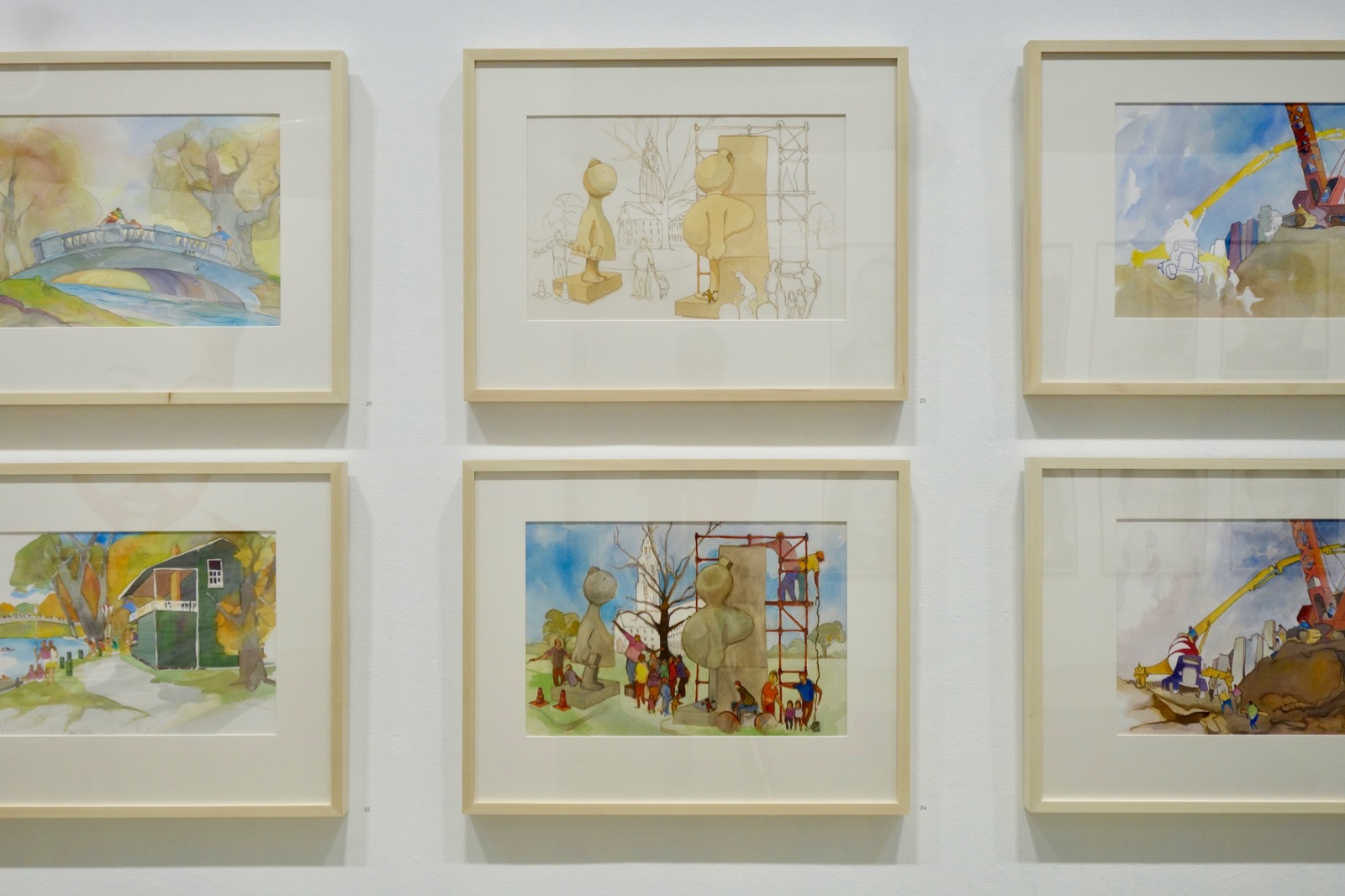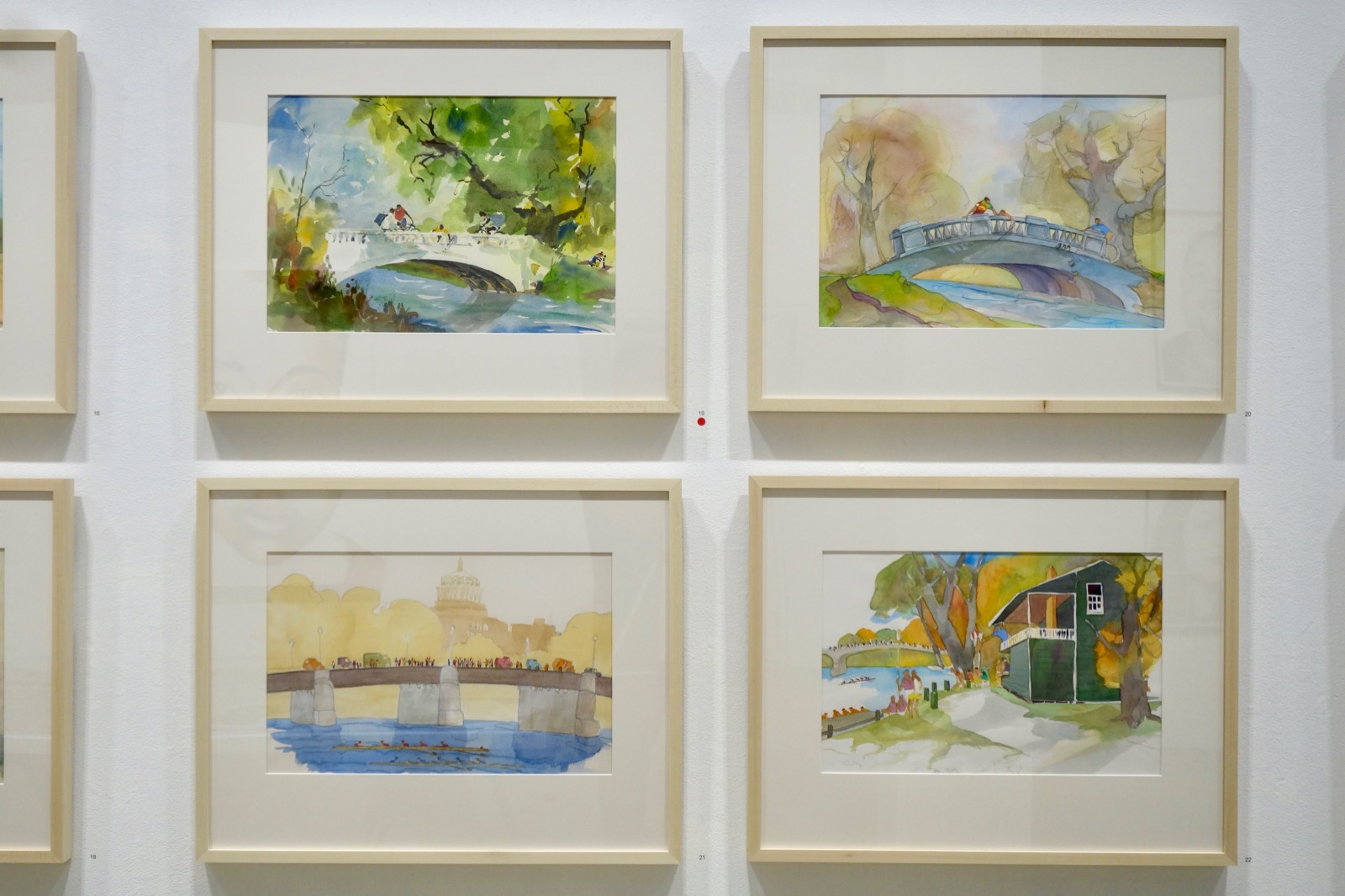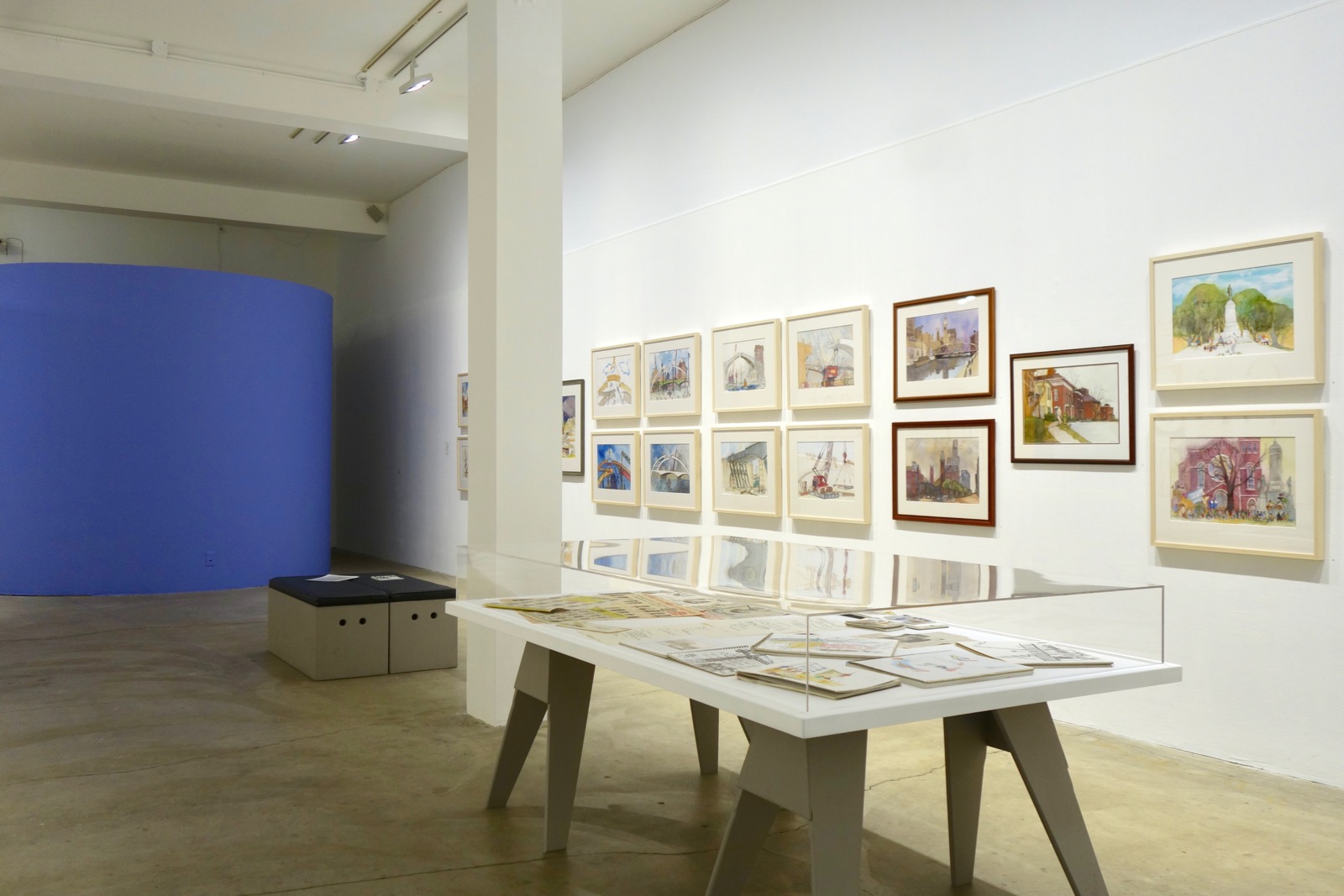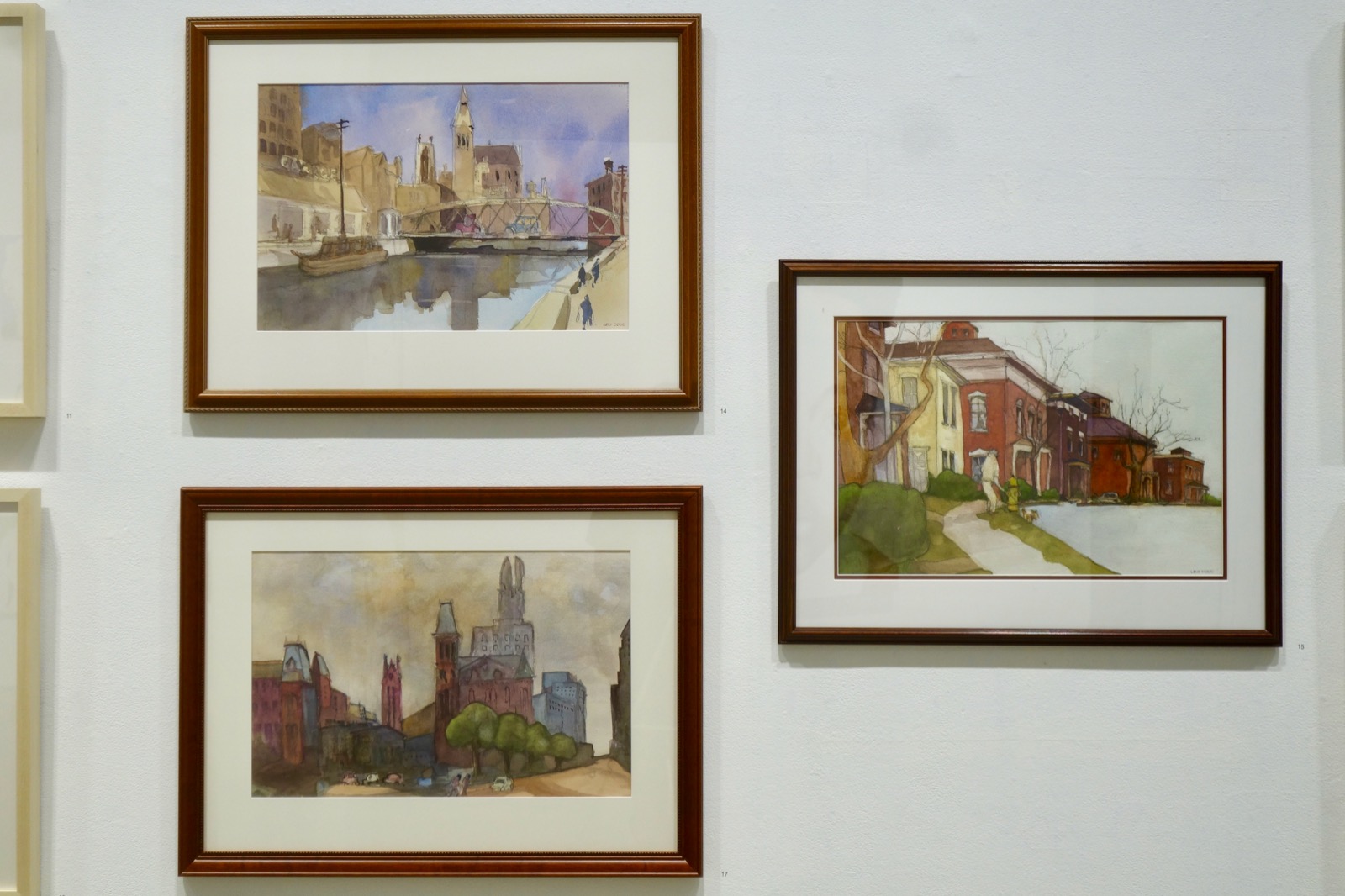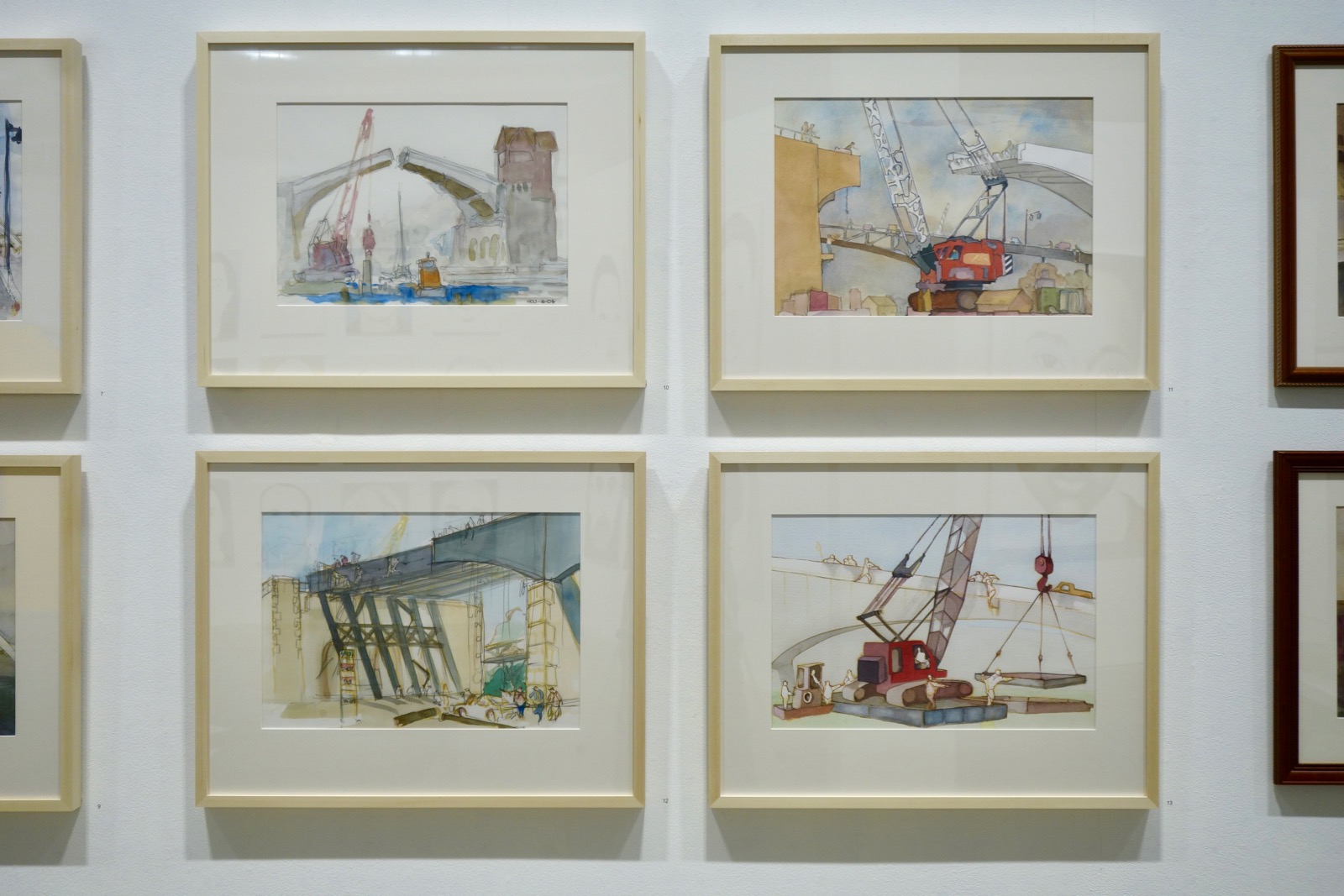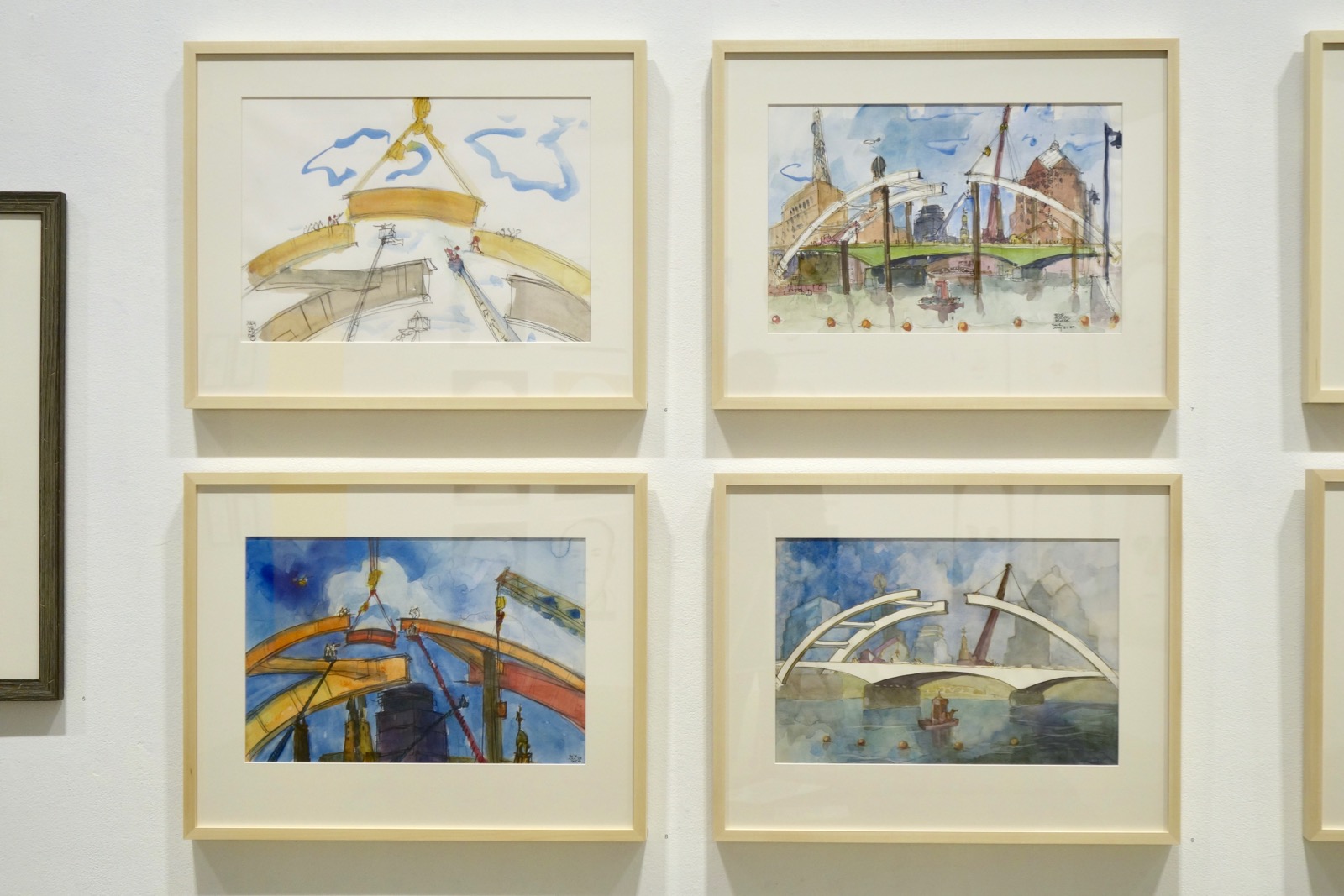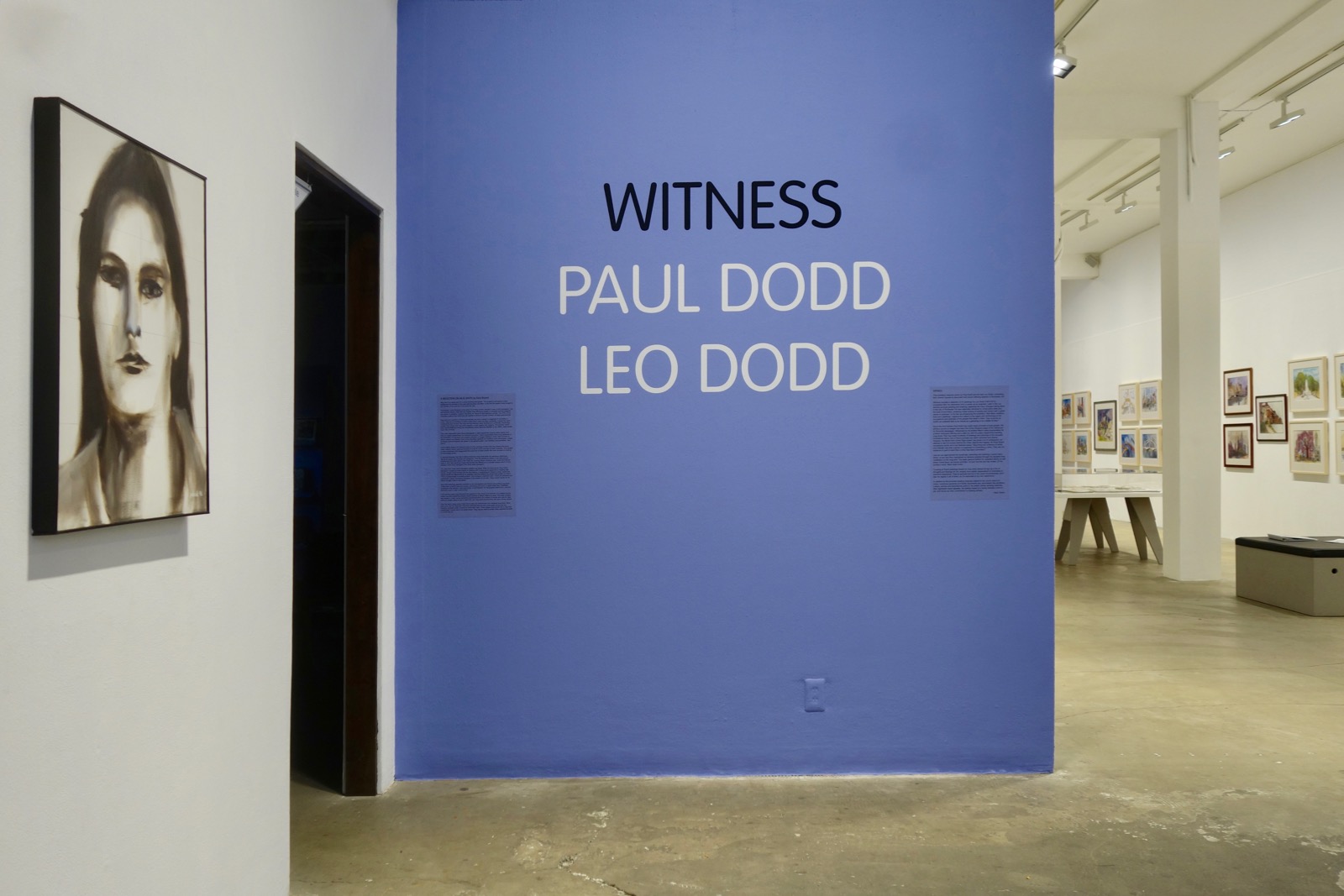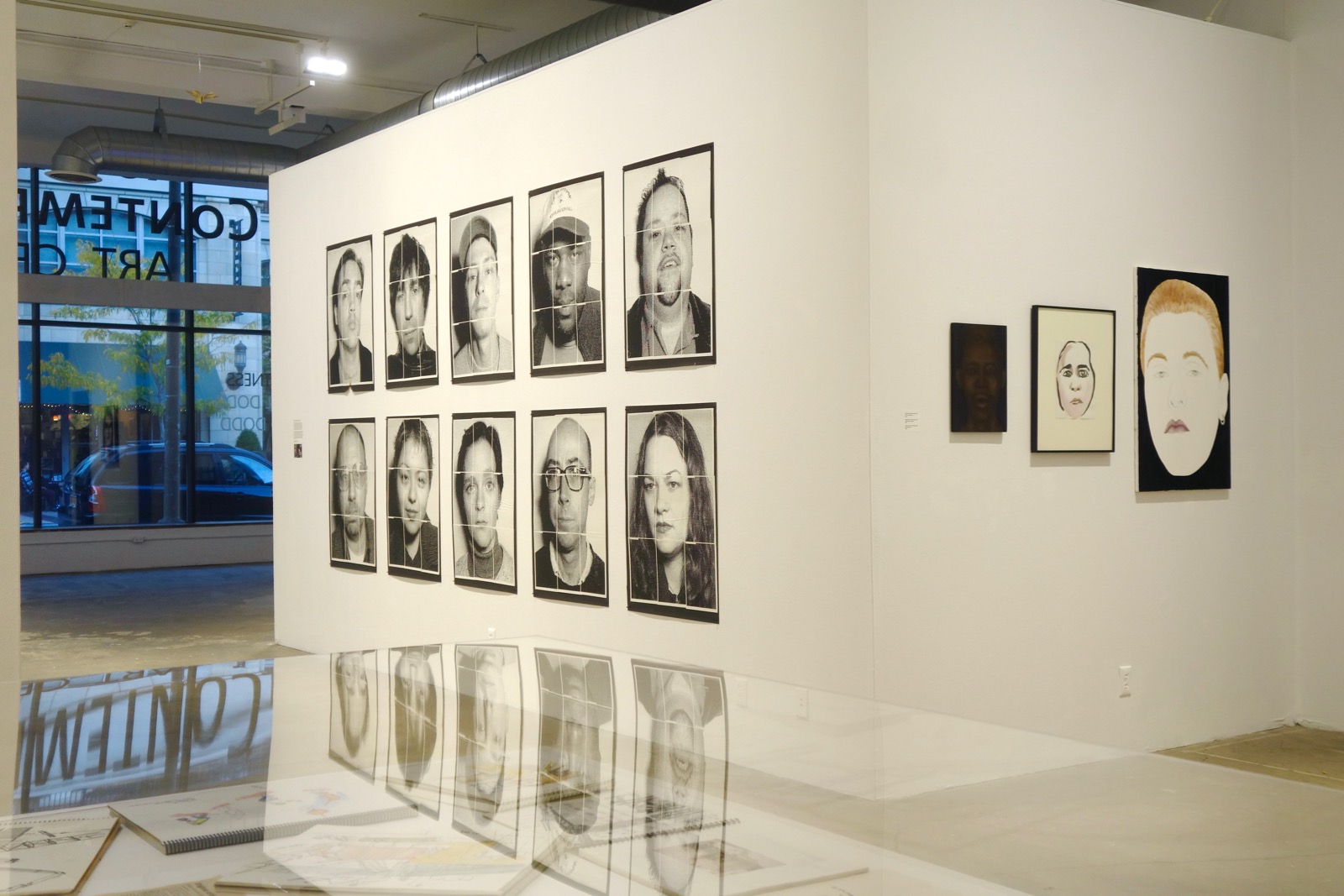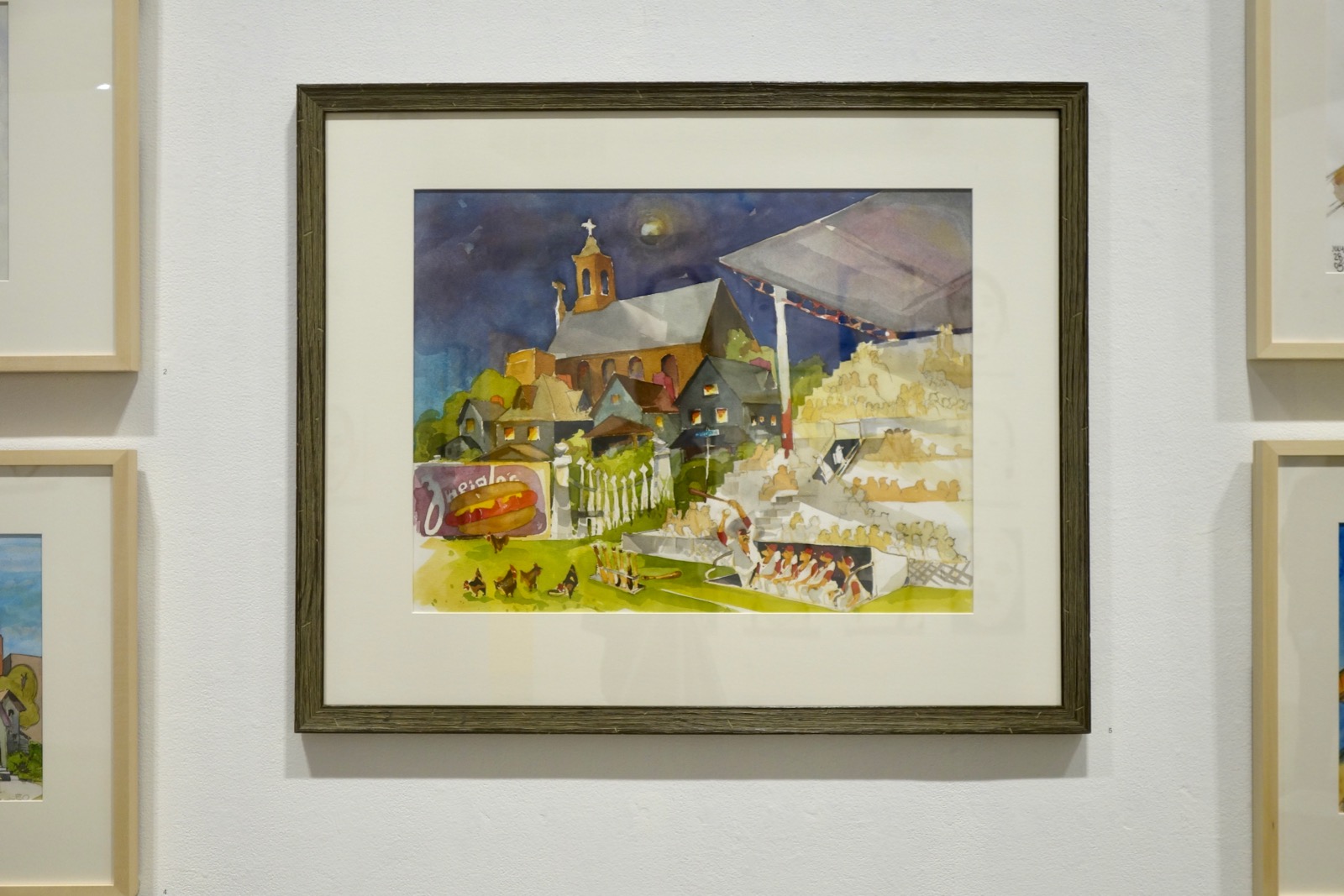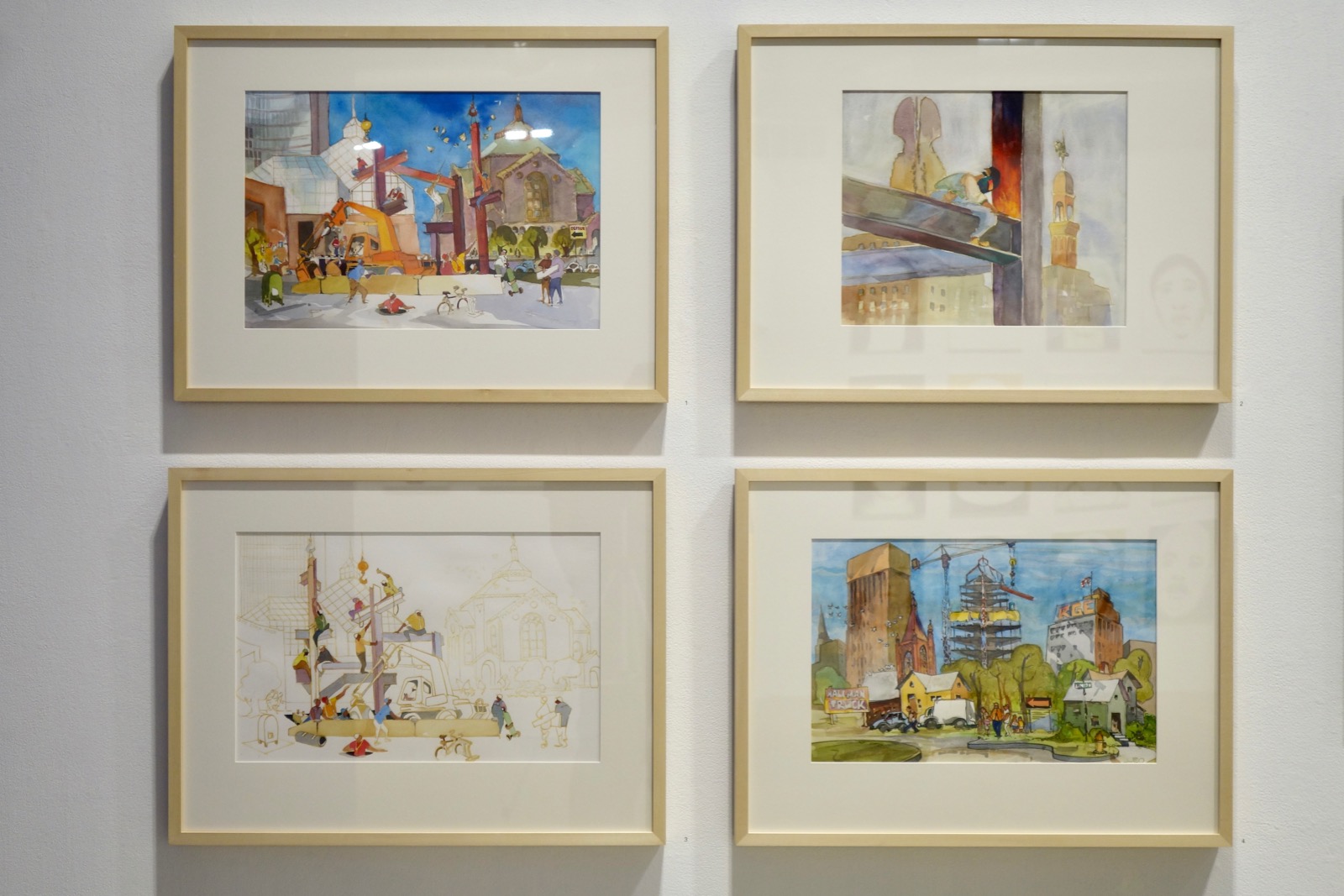“WITNESS, PAUL DODD LEO DODD” 2017 ROCHESTER BIENNIAL 2017
Included here are installation shots, wall text and videos from Rochester Contemporary Art Center’s show entitled “WITNESS – PAUL DODD, LEO DODD,” (paintings and drawings by father and son.) The show ran from October 6 through November 12, 2017.
Individual work can be viewed at Paul Dodd Artwork and Leo Dodd Paintings.
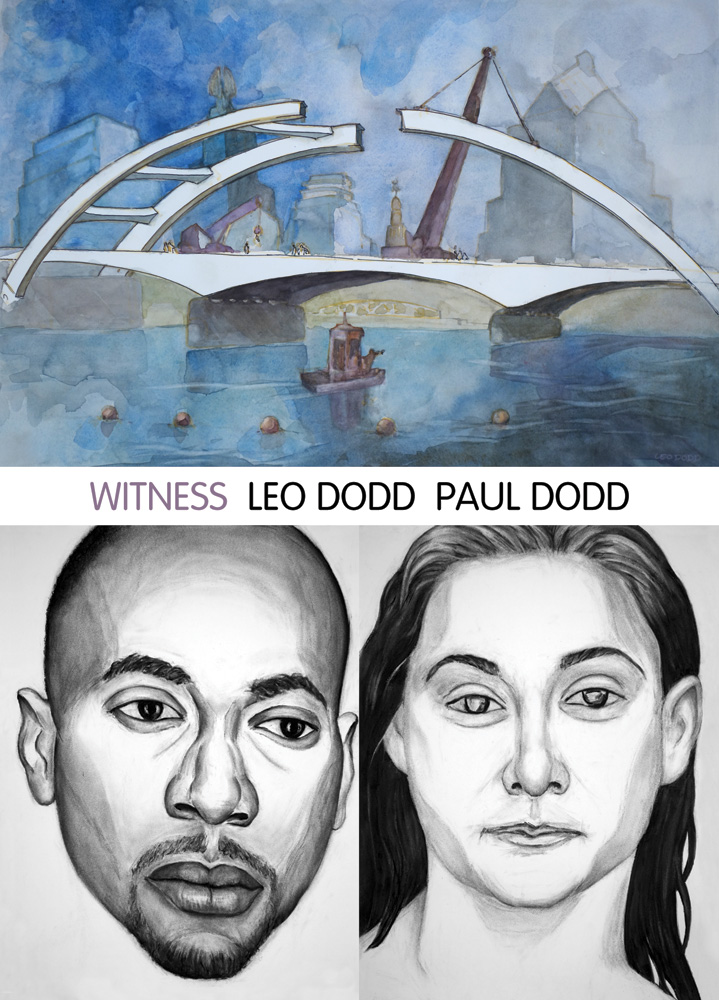
WITNESS
This exhibition features works by Paul Dodd and the late Leo Dodd, contrasting their shared impulse to document and record differing aspects of Rochester, NY.
Witness includes a selection of 27 paintings by Leo Dodd (1927-2015), completed after his retirement from a career as an engineer. Later in life Leo actively pursued painting and drawing, exploring the many changes taking place in the city of Rochester. He was especially attracted to construction sites and the built environment, rendering these scenes of activity and motion with a great sense of optimism. In his text accompanying the exhibition, Rick Muto mentions that Leo’s paintings, “capture the culture of the region with faithfulness to the occupations and activities of the people that dwell in them. That could be as subtle as a plowed field, or as robust as a gathering in the middle of town.”
Since the mid-nineties, Paul Dodd has made many portraits of local people. His major source of images has been the “Crimestoppers” page of the Democrat & Chronicle. Influenced by his brother Mark’s early incarceration for a minor marijuana offense and a later job with the police department handling mugshots, Paul has made hundreds of drawings and paintings of the accused. Considered alone, one of Paul’s portraits can seem removed and neutral, however his Model for Crime Faces project grows out of compassion; an attempt to see the human behind the crime, beyond the tragedy. As Erica Bryant necessarily points out in her featured essay, “Mug shots are evidence of arrest and indicate only that a person is suspected of committing a crime. They are not evidence of guilt or even that a crime has been committed.”
As Leo approached a landscape, sketching and painting the same vantage point many times, so too does Paul, maintaining an iterative practice through his decades- long meditation on the mugshot. The base gesture behind his repeated efforts: to see these Crime Faces as human portraits, not just records and rap sheets. Of his brother’s work, Mark Dodd wrote:
“Looking at Paul’s paintings based on mug shots, always brings up a mix of thoughts and feelings for me ranging from artistic appreciation to memories of personal experience. They’re portraits but not in the usual circumstances, and I see the dignity in all of them, as I’m reminded of my own experience.”
In addition to the provided reading materials related to the visual culture of crime, numerous personal and family documents also accompany the exhibition. Letters, articles and sketchbooks point to the artists’ similar creative working methods, the lasting impact of a family member’s time in jail, their significant visual appetite, and above all, their commitment to bearing witness.
– Bleu Cease, Director, Rochester Contemporary Arts Center
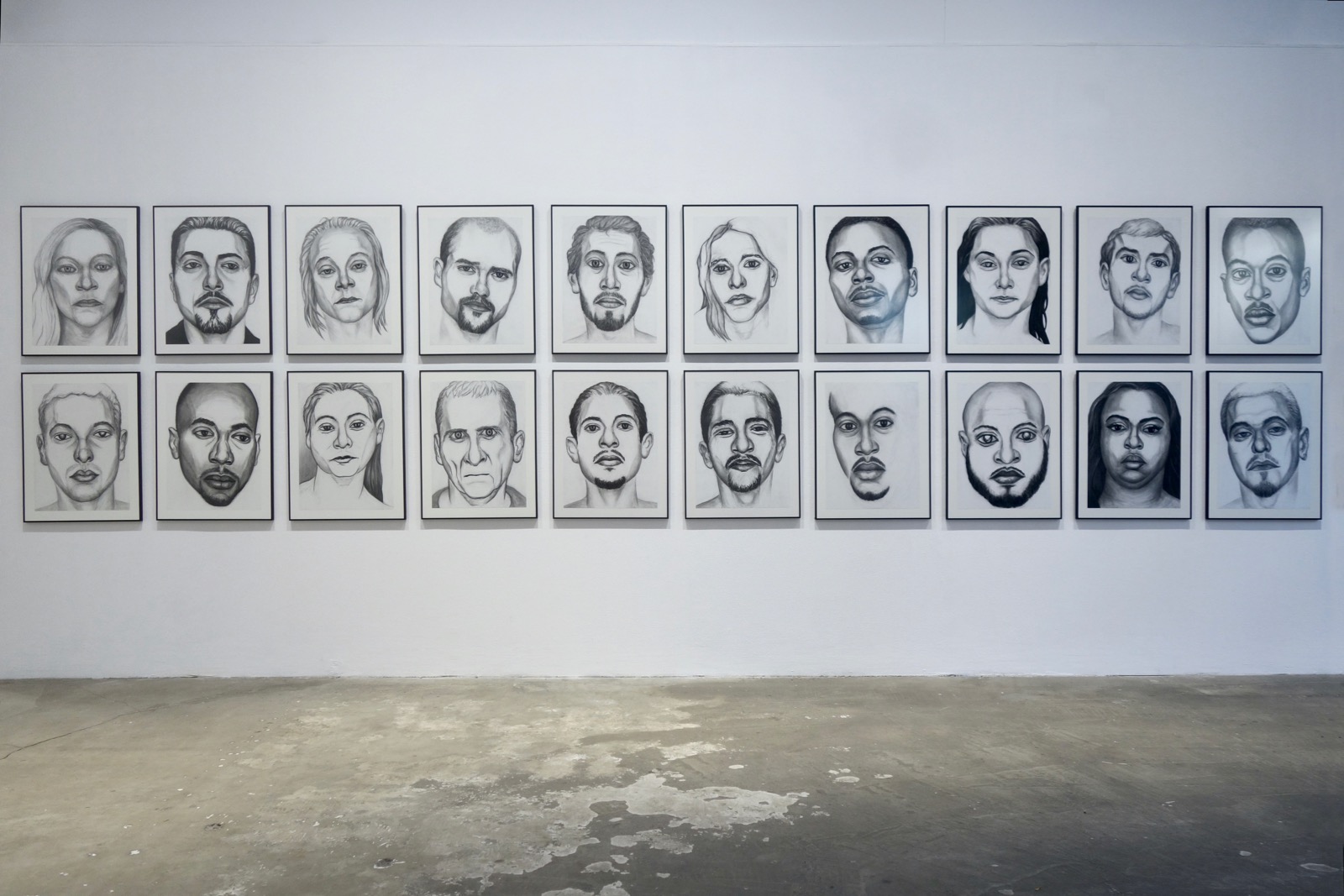
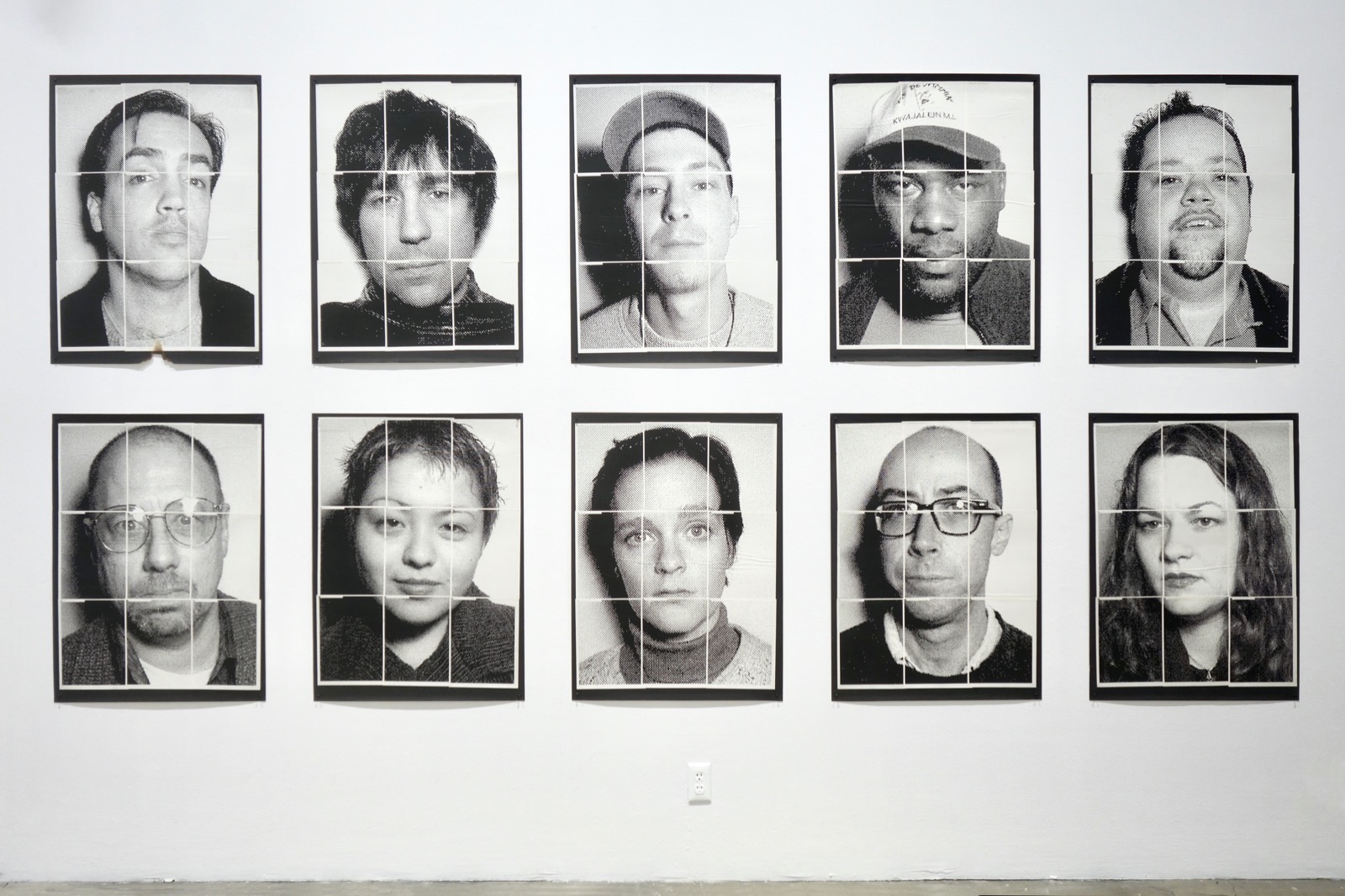
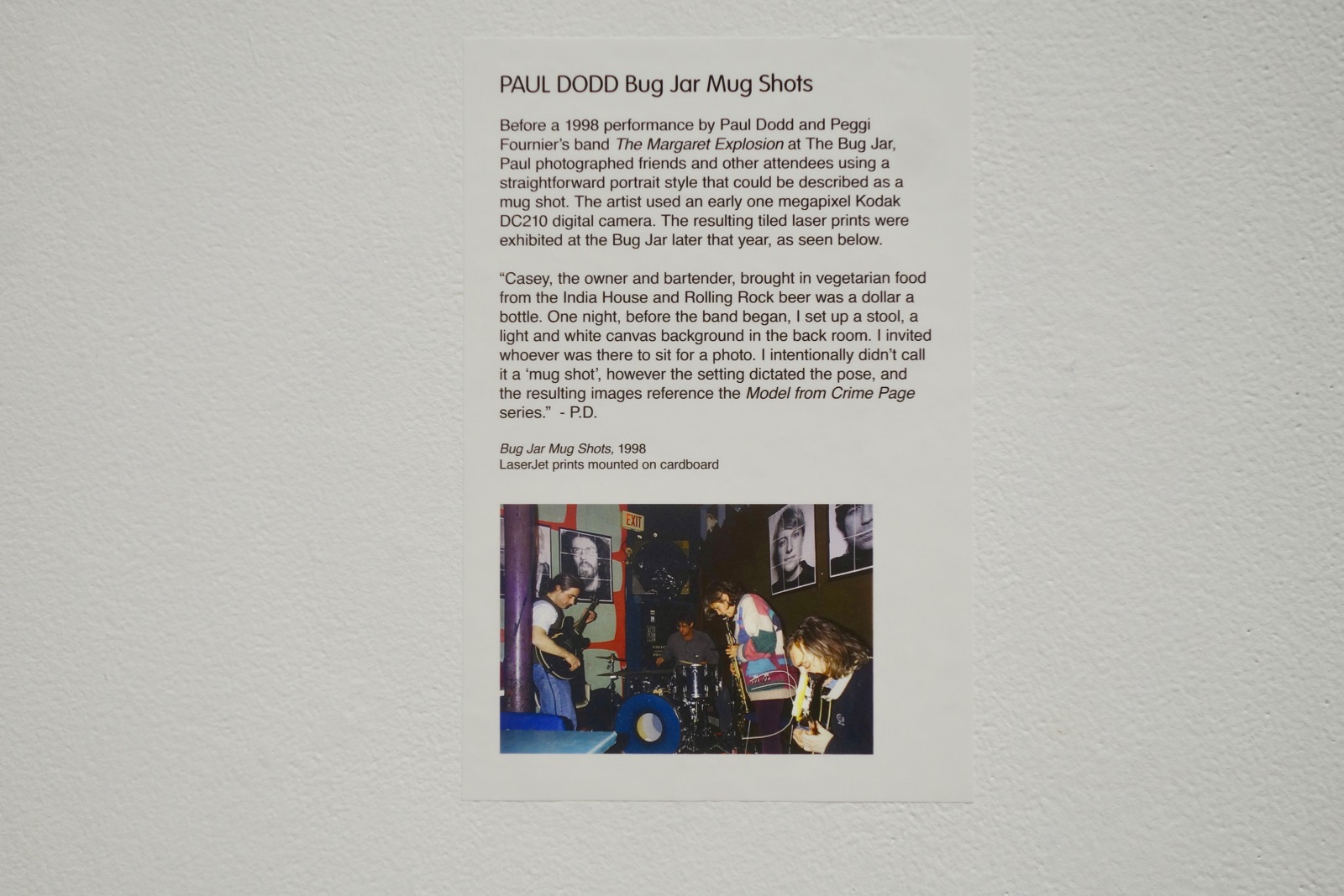
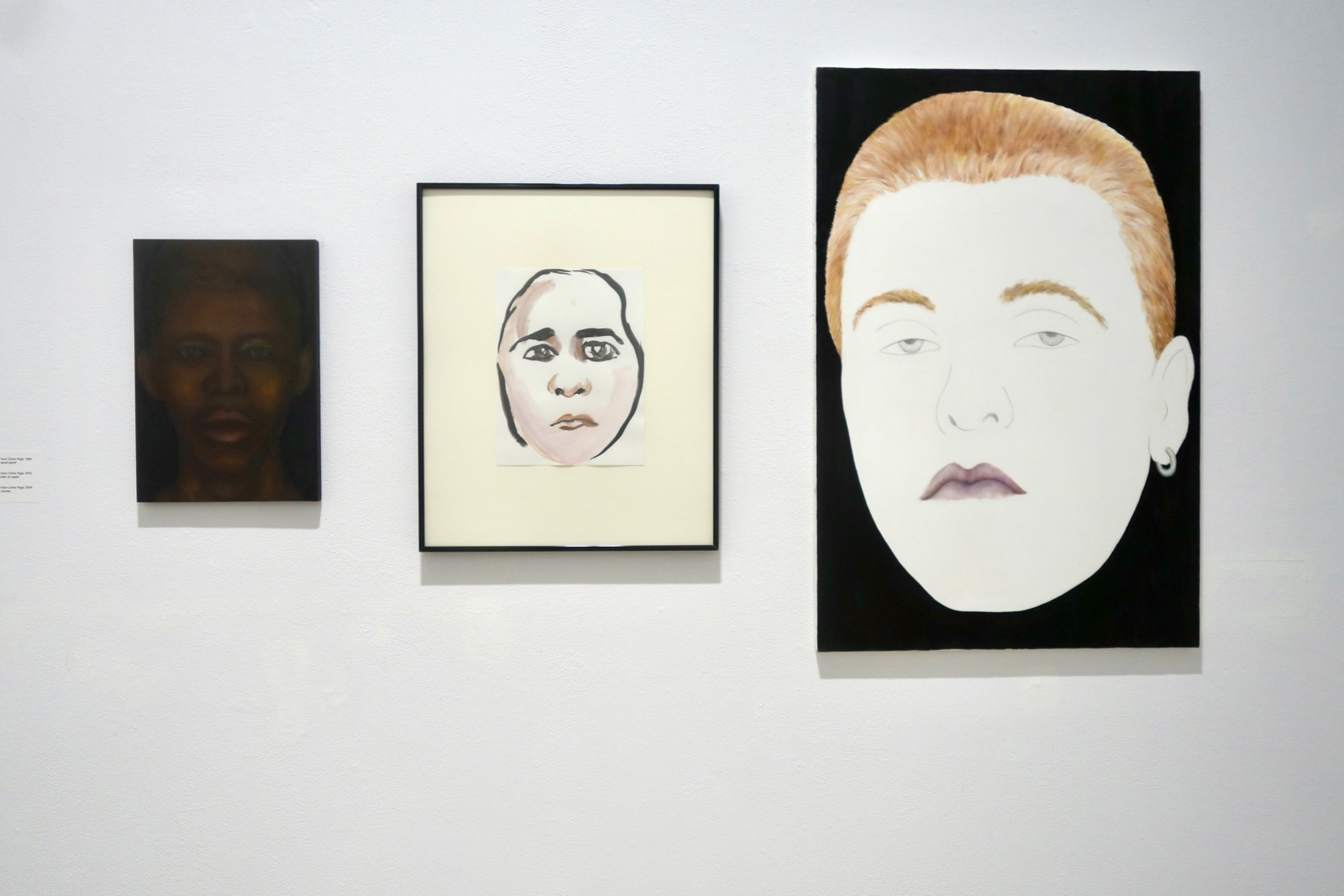
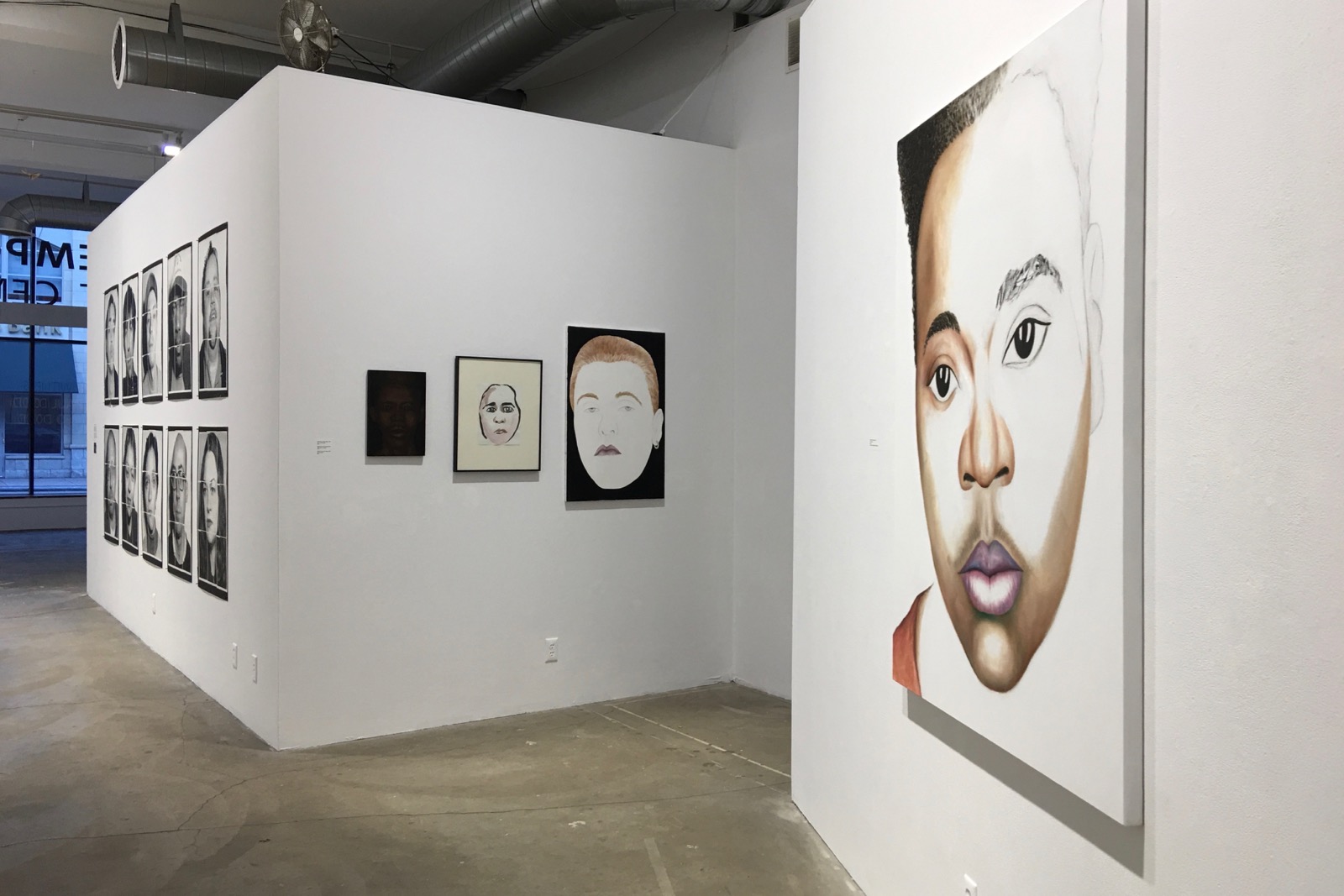
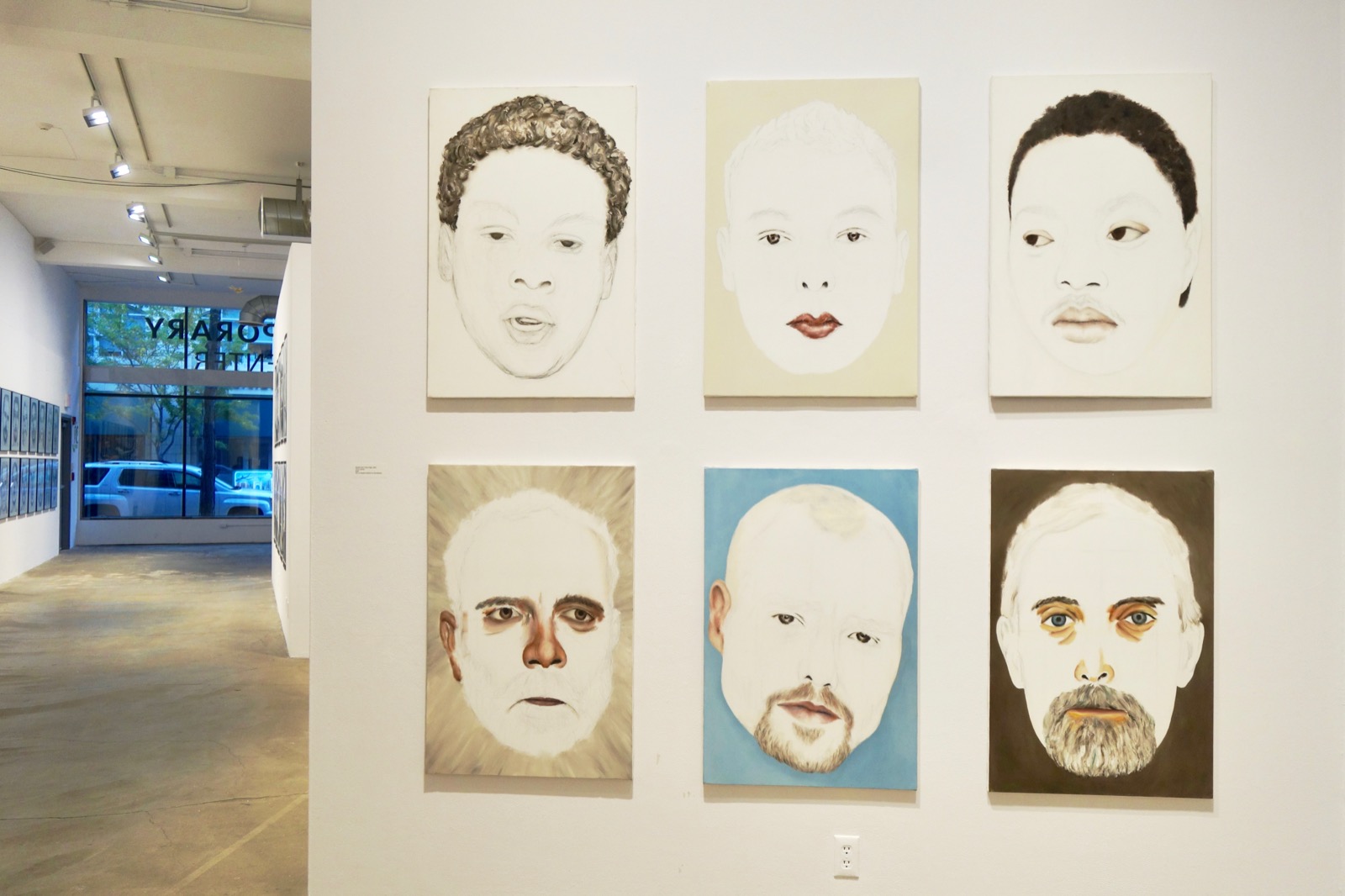
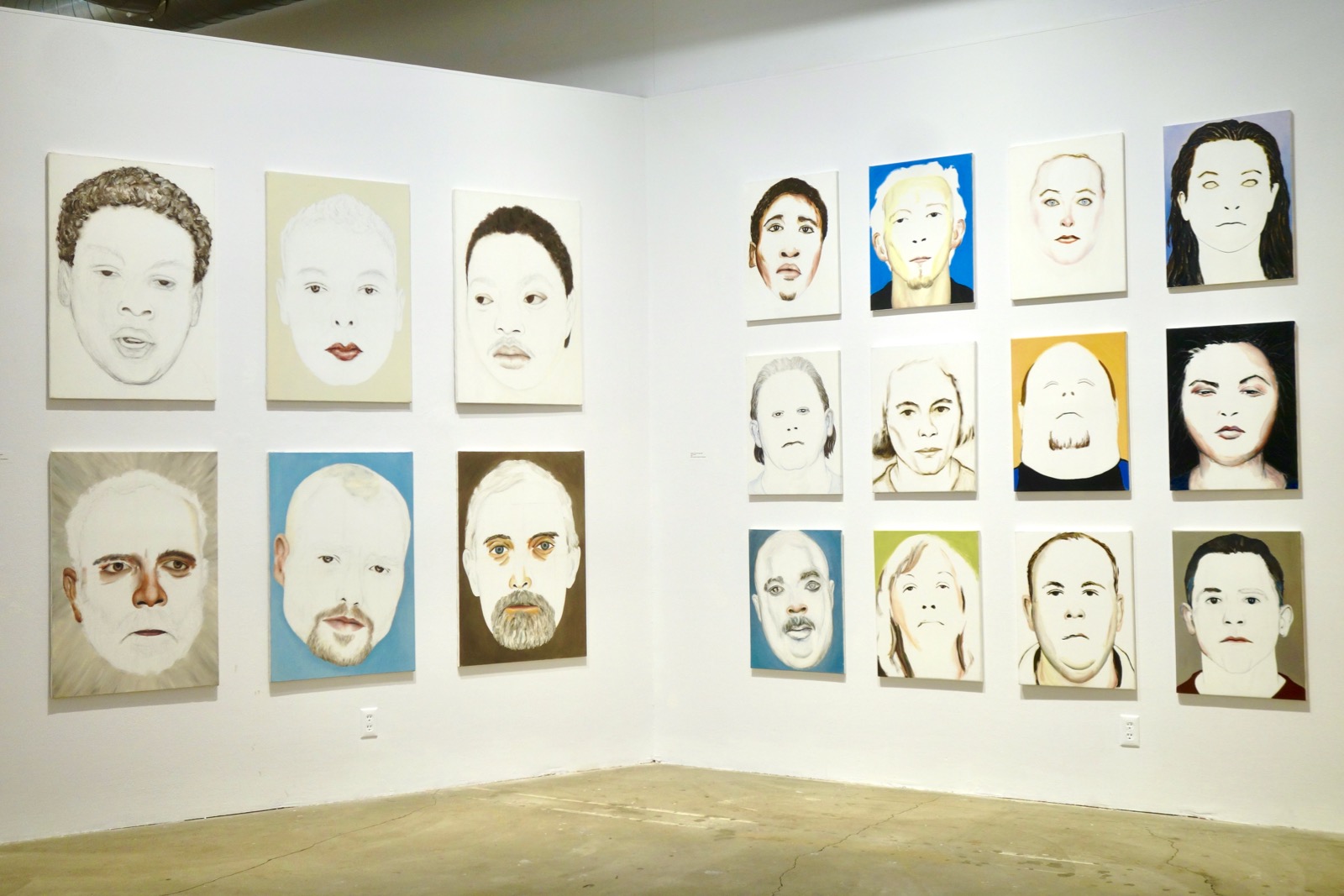
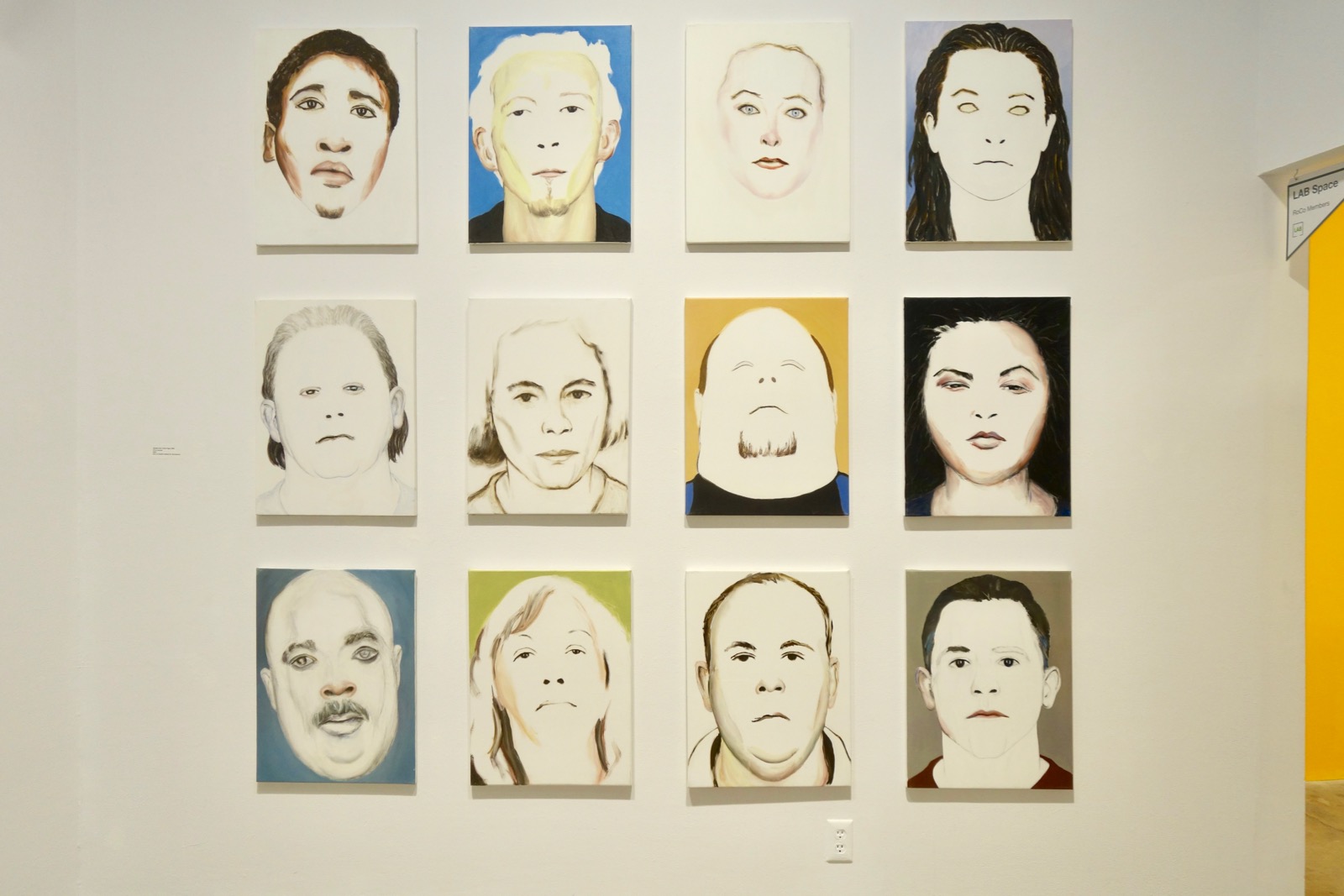
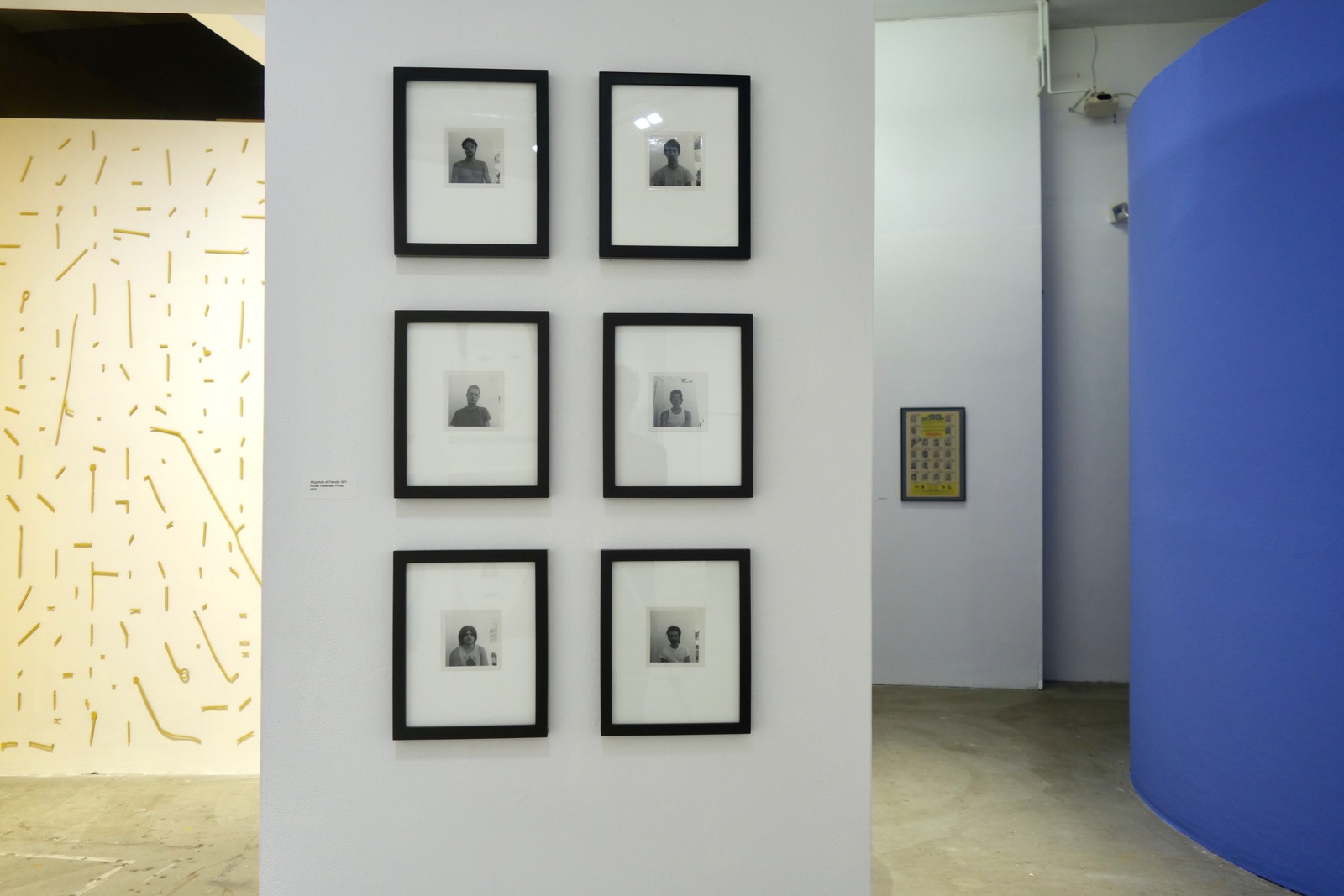
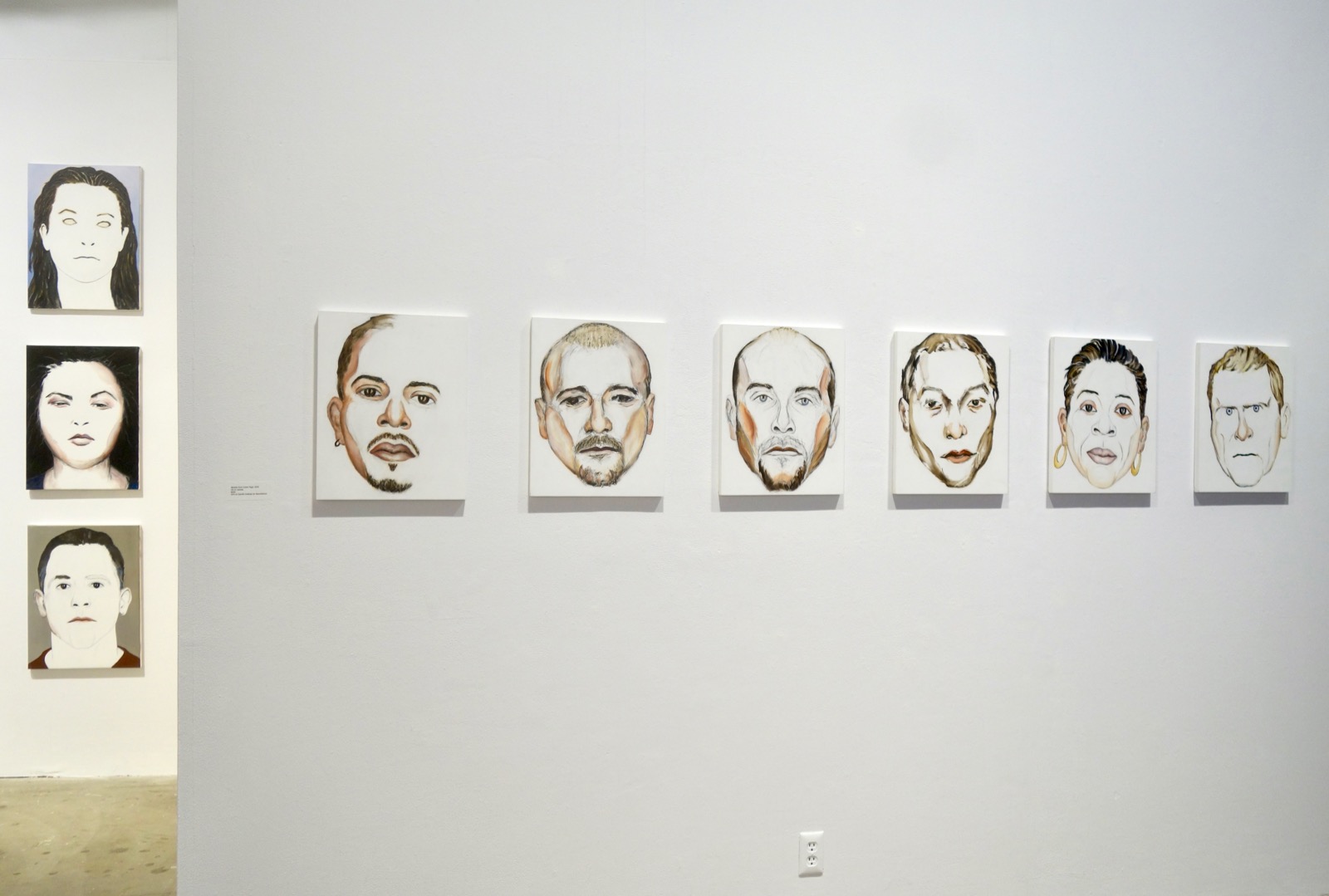
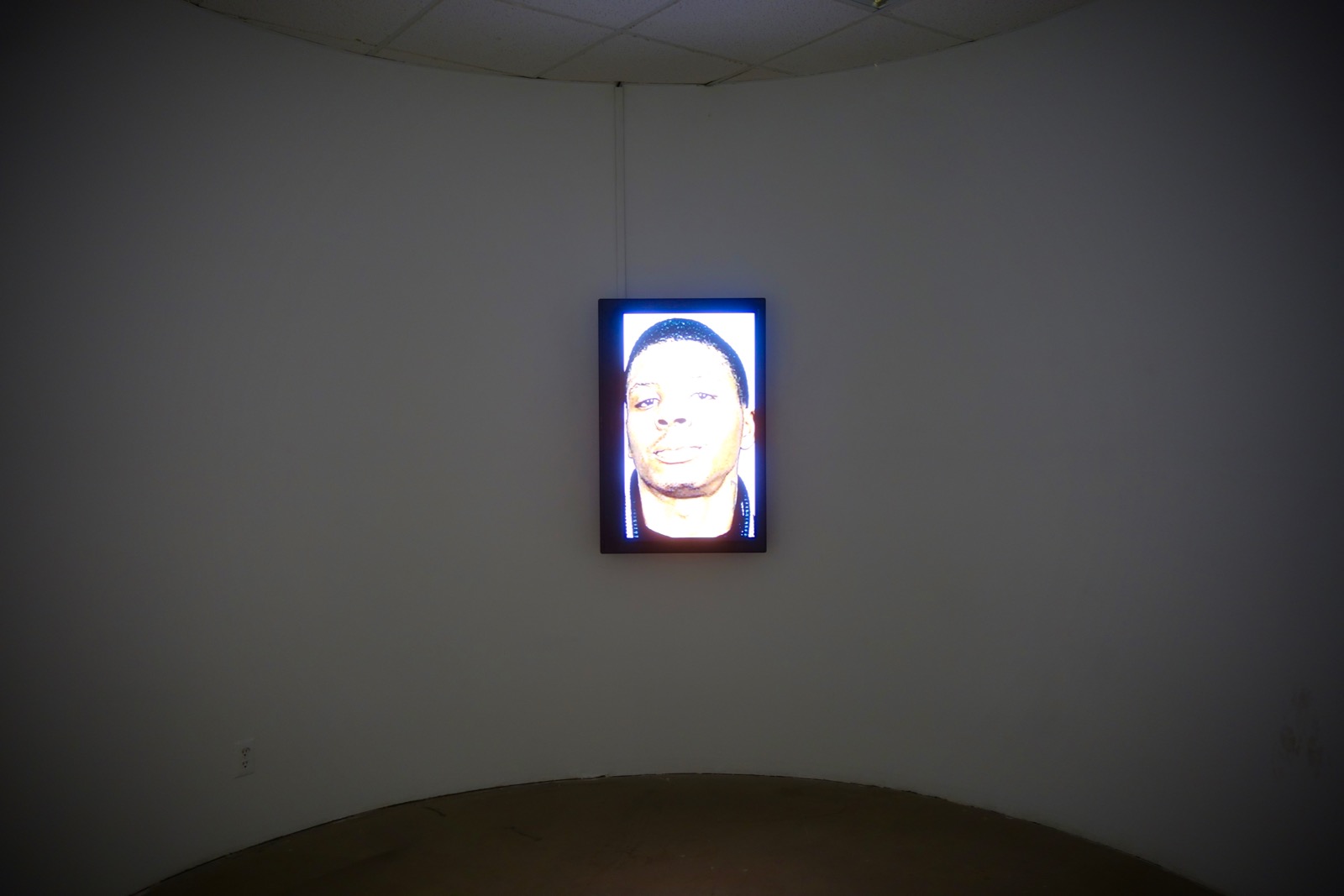
VIDEO OF CRIMESTOPPERS SOURCE MATERIAL
A REFLECTION ON MUG SHOTS
Mug shot is a casual term for a police booking photograph. The suspect is set against a bare background as portraits of the head and shoulders are taken. In the first the suspect looks straight at the camera. In the next he or she faces the side.
Periodically, Crime Stoppers prints about 15 of these photos, stacked in rows, in the newspaper. Law enforcement officers hope that this Fugitive Flyer will cause people to recognize criminal suspects and parole or probation violators. Rewards are offered for tips leading to arrests. The 2016, Crime Stoppers Fugitive Flyer advertised 86 fugitives in Monroe County. Of them, 68 were apprehended.
Mug shots are evidence of arrest and indicate only that a person is suspected of committing a crime. They are not evidence of guilt or even that a crime has been committed. Despite the rights conferred by due process, the mug shot has become visual shorthand for criminality. Psychology studies have shown that mug shots prejudice people against their subjects. The portraits, which were standardized by French law enforcement officer Alphonse Bertillion in the 1800’s, make people “look” like criminals.
This unfair association gives these photographs a value beyond the criminal justice system and
they are widely disseminated for economic purposes. News organizations have long capitalized on the availability of mug shots and people’s attraction to images relating to crime. Fear is known to attract viewers and readers. Due to long-standing ingrained and insidious racist stereotypes, images of certain criminal suspects are scarier to the general public ‐ and therefore more profitable – than others.
A 2014 Media Matters for America study of crime coverage in New York City showed that every major network station disproportionately focused its crime coverage on black suspects. This resulted in news broadcasts that exaggerated the proportion of black people who were accused of crime by 24 percentage points.
A disproportionately high diet of African American mug shots feeds the pernicious stereotype that black people are criminals and dangerous. This has disastrous effects in law enforcement, employment and other areas of life. Kabir Alli, a young African American man, made international news in 2016 after tweeting a video that showed the difference in a Google Images search for the phrases “three black teenagers” and “three white teenagers.”
The search for “three black teenagers” yielded mug shots. When he searched for “three white teenagers” Google provided images of smiling youth holding sports equipment or laughing with friends. Google faced outrage over the discrepancy. A spokesperson blamed society, saying that search results are determined by an algorithm that only reflects the content that people put online. “This is fundamentally a societal problem,” the company’s statement read. “There are persistent and problematic biases, and they’re pervasive in the media, on the web…these search results do not reflect Google’s view on the matter.”
Mug shot publishihg websites capitalize on the assumptions and shame surrounding mug shots. These srtes, of Wthh there are dozens, sometimes announce in capital letters that “CRIMINAL CHARGES ARE MERELY ACCUSATIONS. A DEFENDANT IS PRESUMED INNOCENT UNLESS
PROVEN GUILTY AND CONVICTED.”
If the general public truly presumed the subjects of mug shots to be innocent, it is unlikely that online mug shot publishing industry would continue to attract millions of users. This traffic enables site owners to make money presenting advertisements the millions of people who visit the sites and from the people willing to pay to have their own mug shots removed from the view of these visitors.
Over the years, many people have tried to stop law enforcement from releasing mug shots. More than once, the U.S. Supreme Court has ruled that they are part of the public record and are therefore available under Freedom of Information laws. These images must be left free to play their complicated, loaded role in our visual culture. The may be used to punish crime, exploited for profit or turned into art.
– Erica Bryant, Democrat & Chronicle
PAUL DODD ARTIST TALK
IN CONJUNCTION WITH “WITNESS – PAUL DOOD, LEO DODD”
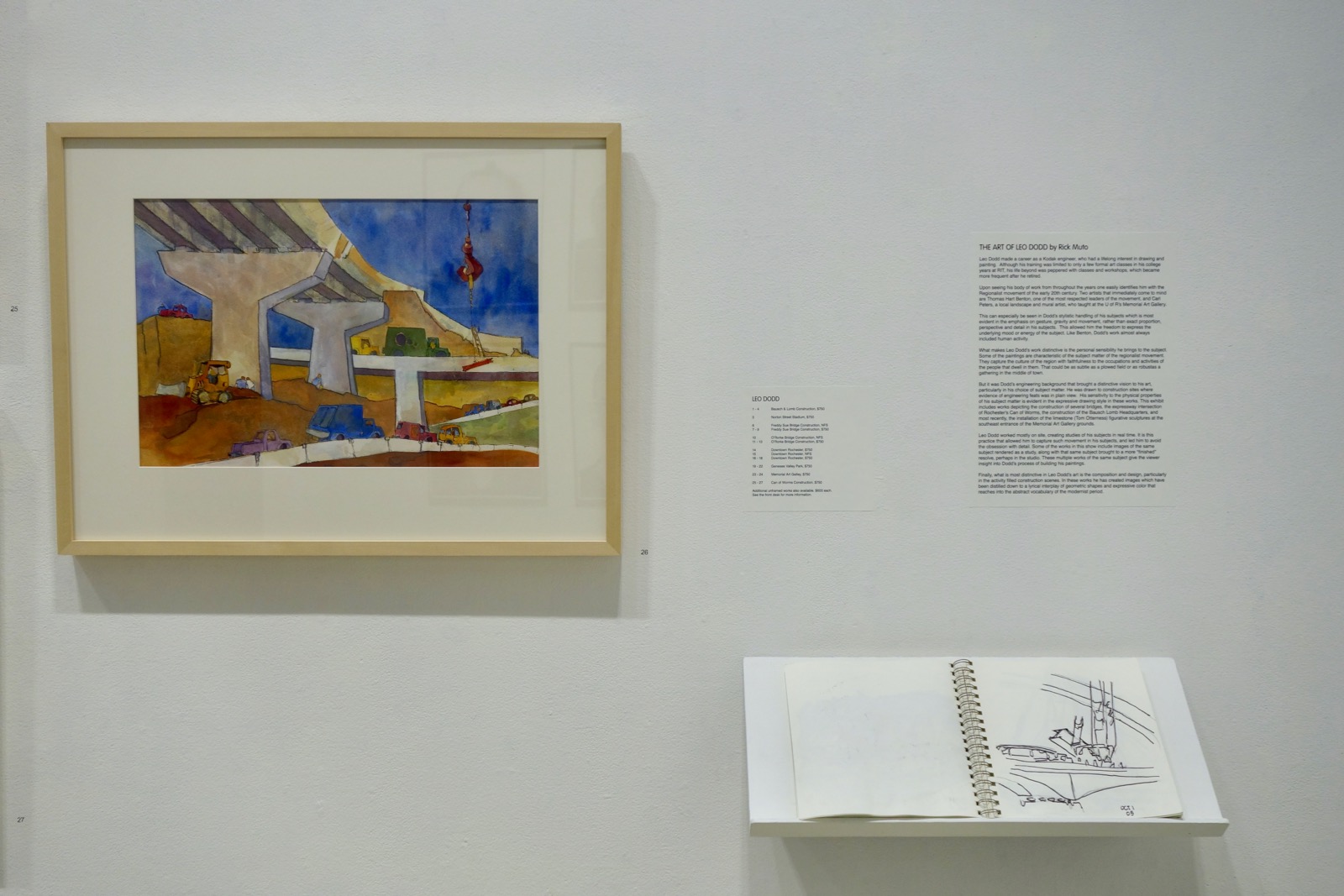
THE ART OF LEO DODD
Leo Dodd made a career as a Kodak engineer, who had a lifelong interest in drawing and painting. Although his training was limited to only a few formal art classes in his college years at RIT, his life beyond was peppered with classes and workshops, which became more frequent after he retired.
Upon seeing his body of work from throughout the years one easily identifies him with the Regionalist movement of the early 20th century. Two artists that immediately come to mind are Thomas Hart Benton, one of the most respected leaders of the movement, and Carl Peters, a local landscape and mural artist, who taught at the U of R’s Memorial Art Gallery.
This can especially be seen in Dodd’s stylistic handling of his subjects which is most evident in the emphasis on gesture, gravity and movement, rather than exact proportion, perspective and detail in his subjects. This allowed him the freedom to express the underlying mood or energy of the subject.
Like Benton, Dodd’s work almost always included human activity.
What makes Leo Dodd’s work distinctive is the personal sensibility he brings to the subject. Some of the paintings are characteristic of the subject matter of the regionalist movement. They capture the culture of the region with faithfulness to the occupations and activities of the people that dwell in them. That could be as subtle as a plowed field, or as robustas a gathering in the middle of town.
But it was Dodd’s engineering background that brought a distinctive vision to his art, particularly in his choice of subject matter. He was drawn to construction sites where evidence of engineering feats was in plain view. His sensitivity to the physical properties of his subject matter is evident in the expressive drawing style in these works. This exhibit includes works depicting the construction of several bridges, the expressway intersection of Rochester’s Can of Worms, the construction of the Bausch Lomb Headquarters, and most recently, the installation of the limestone (Tom Otterness) figurative sculptures at the southeast entrance of the Memorial Art Gallery grounds.
Leo Dodd worked mostly on site, creating studies of his subjects in real time. It is this practice that allowed him to capture such movement in his subjects, and led him to avoid the obsession with detail. Some of the works in this show include images of the same subject rendered as a study, along with that same subject brought to a more “finished” resolve, perhaps in the studio. These multiple works of the same subject give the viewer insight into Dodd’s process of building his paintings.
Finally, what is most distinctive in Leo Dodd’s art is the composition and design, particularly in the activity filled construction scenes. In these works he has created images which have been distilled down to a lyrical interplay of geometric shapes and expressive color that reaches into the abstract vocabulary of the modernist period.
– Rick Muto, Muralist, Fine Artist, Axom Gallery Director
